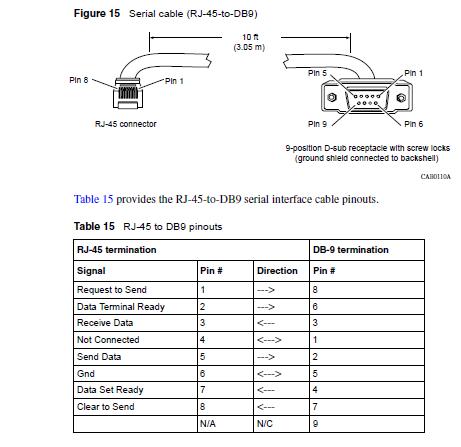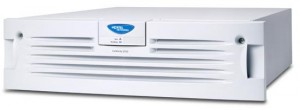![]() In this post I’ll provide an example of how to configure a Nortel VPN Router. We’ll configure the remote office VPN router for a tunnel with 3DES/SHA1 encryption and DH2 using pre-shared keys, routing all traffic to the main office across the tunnel (no split tunneling). You should start by connecting up to the local console port on the VPN router (the diskless 1100,1050,1010 require a special RJ45 -> DB9 console cable). Log into the VPN router with the default username of “admin” and the default password of “setup” and reset it to factory defaults. You’ll find the option under “R” for “Reset System to Factory Defaults”.
In this post I’ll provide an example of how to configure a Nortel VPN Router. We’ll configure the remote office VPN router for a tunnel with 3DES/SHA1 encryption and DH2 using pre-shared keys, routing all traffic to the main office across the tunnel (no split tunneling). You should start by connecting up to the local console port on the VPN router (the diskless 1100,1050,1010 require a special RJ45 -> DB9 console cable). Log into the VPN router with the default username of “admin” and the default password of “setup” and reset it to factory defaults. You’ll find the option under “R” for “Reset System to Factory Defaults”.
Welcome to the Contivity Secure IP Services Gateway Copyright (c) 1999-2004 Nortel Networks, Inc. Version: V05_00.136 Creation date: Aug 20 2004, 15:50:15 Date: 07/23/1980 Unit Serial Number: 11221 Please enter the administrator's user name: admin Please enter the administrator's password: Main Menu: System is currently in NORMAL mode. 1) Interfaces 2) Administrator 3) Default Private Route Menu 4) Default Public Route Menu 5) Create A User Control Tunnel(IPsec) Profile 6) Restricted Management Mode FALSE 7) Allow HTTP Management TRUE 8) Firewall Options 9) Shutdown B) System Boot Options P) Configure Serial Port C) Controlled Crash L) Command Line Interface R) Reset System to Factory Defaults E) Exit, Save and Invoke Changes Please select a menu choice (1 - 9,B,P,C,L,R,E):
The first step will be to configure the IP addressing for the private LAN and public WAN interfaces. Using the serial console select “L) Command Line Interface” from the menu options.
CES>
Upon entering the CLI environment the prompt will be changed to “CES>”. You must now enter privileged mode using the “enable” command entering the default admin password of “setup”.
CES>enable Password: *********
Let’s take care of the easy stuff first. I’m currently working in the Eastern time zone;
CES#clock timezone est CES#clock set 15:22:30 12 JANUARY 2005
You can discern from the syntax above that #clock set <hh:mm:ss> <day> <month> <year>
Now you must enter configuration mode using the commands listed below. We’ll reset the admin password before anything else.
CES#configure terminal Enter configuration commands, one per line. End with Ctrl/z. CES(config)# CES(config)#adminname admin password <standard password>
We’ll configure the private LAN IP Address. In the example below I’m using 10.2.203.1 as the LAN address of the branch office VPN router.
CES(config)#interface FastEthernet 0/1 CES(config-if)#ip address 10.2.203.1 255.255.255.0 CES(config-if)#exit
Next we’ll configure the MANAGEMENT IP Address. The LAN address and management IP address must be on the same subnet.
CES(config)#ip address 10.2.203.10 Management address set to 10.2.203.10 successfully ! Next, make sure Mgt addr and private LAN addr are on same subnet CES(config)#
You should use the IP addressing that’s been assigned to the equipment your configuring in place of the IP addressing used above. Next we’ll assign the public WAN IP Address provided by the Internet Service Provider (ISP) which in this case happens to be Verizon DSL;
CES(config)#interface FastEthernet 1/1 CES(config-if)#ip address 70.256.1.10 255.255.255.0 %Warning: The IP address type is changed from DHCP dynamic to static CES(config-if)#exit CES(config)#ip default-network 70.256.1.1 public CES(config)#ip name-server 151.197.0.38 151.197.0.39 199.45.32.43
NOTE: FastEthernet 0/1 is the PRIVATE LAN while FastEthernet 1/1 is the PUBLIC WAN
Let’s disable those services we won’t be using and enable those we will be using;
CES(config)#no tunnel protocol pptp public CES(config)#no tunnel protocol pptp private CES(config)#no tunnel protocol l2tp public CES(config)#no tunnel protocol l2tp private CES(config)#ipsec encryption 3des-sha1 CES(config)#ipsec encryption aes256-sha1 CES(config)#no ipsec encryption aes128-sha1 CES(config)#no ipsec encryption des40-md5 CES(config)#no ipsec encryption des40-sha1 CES(config)#no ipsec encryption des56-md5 CES(config)#no ipsec encryption des56-sha1 CES(config)#no ipsec encryption hmac-md5 CES(config)#no ipsec encryption hmac-sha1
Let’s configure the “Base” default Branch Office Group with the standard settings.
CES(config)#bo-group ipsec /Base CES(config-bo_group/ipsec)#encryption 3des-sha1 CES(config-bo_group/ipsec)#encryption ike 3des-group2 CES(config-bo_group/ipsec)#antireplay enable CES(config-bo_group/ipsec)#no compress CES(config-bo_group/ipsec)#initial-contact enable CES(config-bo_group/ipsec)#exit
Let’s add a designator for the local network (to be used later – replace with your IP network)
CES(config)#network add LocalNetwork ip 10.2.203.0 mask 255.255.255.0
Let’s add a sub group for our IPsec tunnel configuration;
CES(config)#bo-group add /Base/AcmeHealth CES(config)#bo-conn add Acme-1 /Base/AcmeHealth CES(config)#bo-conn Acme-1 /Base/AcmeHealth CES(config/bo_conn)#conn-type peer2peer CES(config/bo_conn)#local-endpoint 70.256.1.10 CES(config/bo_conn)#remote-endpoint 192.1.1.124 CES(config/bo_conn)#tunnel-type ipsec CES(config/bo_conn)#ipsec authentication text-pre-shared-key password987 CES(config/bo_conn)#routing type static CES(config/bo_conn)#state enable CES(config/bo_conn)#routing static CES(config/bo_conn/routing_static)#local-network LocalNetwork CES(config/bo_conn/routing_static)#remote-network 0.0.0.0 mask 0.0.0.0 state enable cost 1 CES(config/bo_conn/routing_static)#exit
Let’s setup the DHCP relay agent forwarding our DHCP/BOOTP requests to 10.2.16.40;
CES(config)#no service dhcp enable CES(config)#ip default-network 70.20.130.1 public CES(config)#ip dhcp-relay 10.2.203.1 CES(config)#ip dhcp-relay 10.2.203.1 enable CES(config)#ip helper-address 10.2.203.1 server 1 10.2.16.40 CES(config)#ip forward-protocol dhcp-relay
Since we’re routing everything over the IPSec tunnel (the remote-network was 0.0.0.0 with a mask of 0.0.0.0) we need to change the default route preference.
CES(config)#ip default-route-preference private private
That’s the short approach to using the CLI interface to configure the Nortel VPN Router. There is a somewhat old and slow web interface that you can also use to configure the VPN router. You only need to point a web browser to the mangement IP address.
Cheers!
Update: Wednesday December 10, 2008
Here’s the pinout for the special RJ45 to DB9 serial cable used to access the diskless VPN routers;
Cheers!



 It would seem there are a lot of folks out there looking for the recovery floppy disk that can be used to recover a defective installation of a Nortel VPN Router 1700, 2700 and 5000. I believe this disk will also work with previous models such as the Contivity 1500, 2500, 2600 and 4000 series.
It would seem there are a lot of folks out there looking for the recovery floppy disk that can be used to recover a defective installation of a Nortel VPN Router 1700, 2700 and 5000. I believe this disk will also work with previous models such as the Contivity 1500, 2500, 2600 and 4000 series.